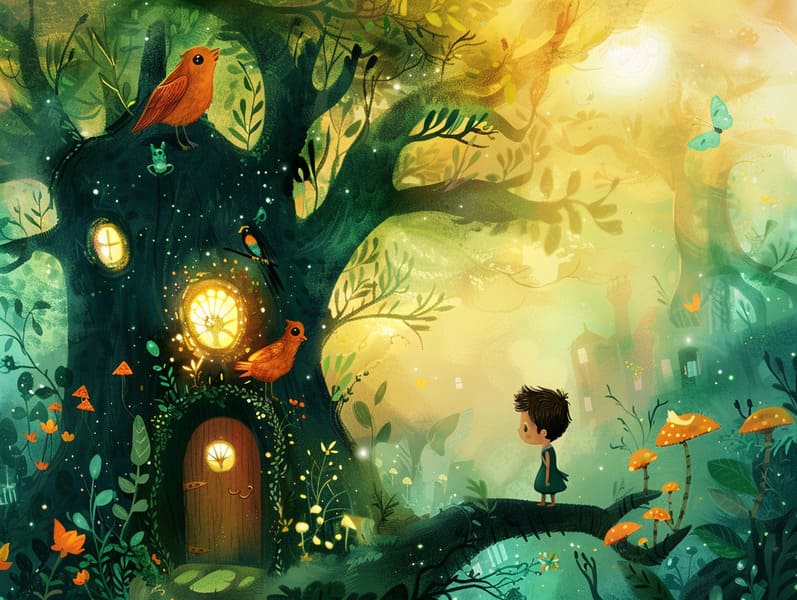The Evolution of Mythical Fairy Tales with Their Eternal Captivation.
The Evolution of Mythical Fairy Tales with Their Eternal Captivation.
Blog Article

Short fairy tales have enduring presence. These stories have been conveyed from one generation to the next centuries before they were ever transcribed. They were born from a variety of civilizations, including African traditions. They were initially narrated among mature audiences, often carrying themes and messages reflective of the societal norms and beliefs of the time.
The renowned Brothers Grimm, the two Grimm brothers, were among the first to compile and publish many of these beloved tales. Their published works, "Grimm's Children's Stories," included tales like "The True Bride," "Hansel and Gretel," and "The True Story of Snow White," which have since become pillars in the world of iconic fairy tales. Similarly, the Danish author's enchanting tales, such as "The Sea Maid," and "The Little Duckling," have stolen hearts worldwide, securing their place in the pantheon of famous fairy tales.
Even though they are old, traditional fairy tales remain as pertinent as ever, especially as children's night stories. These charming stories are now available in various formats, including vividly illustrated books, magical animations, and internet fairy tales.
Their unwavering allure can be linked to several enchanting factors:
Valuable Lessons: Classic fairy tales often whisper important moral lessons. Narratives like "The Shepherd Boy and the Wolf" teach the merit of integrity, while "The Race of the Tortoise and the Hare" show the merits of perseverance and modesty. These narratives offer little ones clear distinctions between truth and falsehood, developing their moral compass in a mild yet meaningful way.
Compassion and Insight: Ancient fairy tales frequently include heroines facing challenges and struggles, provoking young listeners to resonate with their struggles and support their triumphs. For instance, "Beauty and Her Beast" demonstrates the importance of seeing inner beauty to appreciate the inner core of a character, building perception and comprehension.
Cultural Understanding: Many old fairy tales are infused with the cultural contexts from which they arose. Reading these stories can provide informative snapshots into different cultures, cultivating a sense of cultural insight and understanding.
Fantasy and Imagination: The extraordinary elements in fairy tales—magical beings—enhance children’s creative dreams. These stories bring readers to imaginary realms, unleashing inventive dreams and a sense of awe that endures a lifetime.
Old fairy tales are not only enchanting but also edifying. They act as enchanted tools in cultivating various brain and heart skills in children. When ancient fairy tales are told out loud, they develop linguistic abilities by showing new linguistic elements and sophisticated sentence structures. This practice also promotes hearing perception and concentration, as the young listen intently, prepared to see what happens next.
Furthermore, conversing about the themes and characters of classic fairy tales can develop problem-solving abilities and analytical skills. Kids are instructed to spot patterns, make predictions, and know cause and effect. These reflections also advance little ones articulate their thoughts and feelings, cultivating their emotional intelligence.
In today’s digital era, the abundance of online storybooks has made these fairy tales more obtainable than ever. Web platforms and mobile apps share large libraries of Grimm's fairy tales that can be perused or listened through anytime, anywhere. Fairy tales spoken are particularly liked, making available an interactive way for kids to be a part of these entrancing tales. Read-aloud stories and narrated videos transport characters and settings to life, often paired with delightful sound effects and soundtracks that improve the storytelling journey.
The everlasting appeal of timeless fairy tales lies in their ability to transform to modern times while holding onto their essential themes. Contemporary renditions of these tales often bring in more different figures and modern settings, making them relatable to today’s audience. However, the basic principles of valour, goodness, and fair-mindedness remain unchanged, continuing to influence children of all ages.
Timeless fairy tales also offer a sense of serenity and knowability. They render a methodical narrative with a recognizable beginning, middle, awesome site and end, often closing with the conclusion of conflicts and the triumph of morality over wickedness. This uniformity can be calming for children, making known a sense of assuredness in an unstable world.
Timeless fairy tales continue to charm and train new generations, maintaining their enchantment and impact in modern society. As children's bedtime stories, they give a perfect blend of wonder and wisdom, advancing moral values, empathy, and creativity. The prevalence of digital fairy tales and the well-received status of fairy tales narrated certify that these ancient narratives remain available to new generations.
By keeping and broadcasting these narratives, we continue to commemorate the rich tapestry of creativity and cultural heritage. Whether you are seeing a vividly illustrated book, seeing a online library, or playing an audiobook, the mystique of Grimm's fairy tales is always within reach. These tales reveal of the perpetual effect of narratives and its ability to hold us together across eras and regions.
If you are accessing a colorful picture book, exploring a cyber collection, or listening to an narrated book, the delight of timeless fairy tales is always within reach.
These tales reveal of the steadfast strength of narratives and its ability to tie us across generations and cultures, weaving a spell that delights and instructs alike.